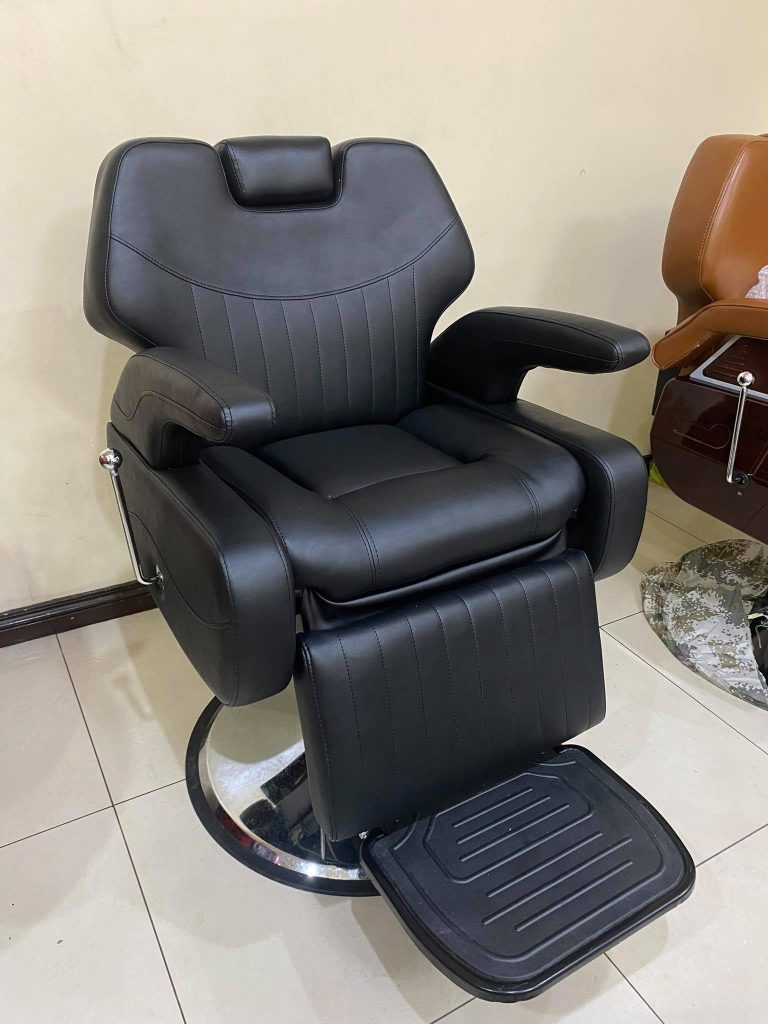The Role of Barber Chairs in Shaping the Barbering Industry
Barber chairs play a pivotal role in shaping the barbering industry, blending functionality with tradition to create a unique customer experience. These chairs are not merely furniture; they are iconic symbols that reflect the rich history and evolving trends within the barbering profession. Historically, barber chairs have been designed with both comfort and functionality in mind. Dating back to the late 19th century, when the barbering trade began to flourish, these chairs were crafted from durable materials such as leather and metal, embodying a sense of craftsmanship that resonates to this day. The adjustable features of early barber chairs allowed barbers to accommodate clients of varying heights, ensuring a comfortable and precise haircutting experience. This attention to detail underscored the importance of customer satisfaction and loyalty, establishing the barber shop as a community hub where men could socialize and receive grooming services in style.

As the barbering industry evolved throughout the 20th century, so too did the design and functionality of barber chairs. The introduction of hydraulic systems in the early 1900s revolutionized the profession, enabling barbers to effortlessly adjust the height and recline of the chair with hydraulic pumps. This innovation not only enhanced barbering techniques but also elevated the overall customer experience, transforming routine haircuts into indulgent grooming rituals. Beyond their practical utility, barber chairs became symbols of prestige and craftsmanship within the barbering community. Manufacturers began to incorporate luxurious materials and intricate designs into their chairs, catering to the aesthetic preferences of both barbers and their clientele. The iconic barber pole motif often adorned these chairs, symbolizing the timeless tradition of barbering and evoking a sense of nostalgia for classic grooming rituals.
In contemporary barber shops, the role of barber chairs extends beyond functionality to encompass a reflection of the shop’s identity and brand. Modern chairs are designed with ergonomic principles in mind, prioritizing comfort for extended grooming sessions while maintaining the classic appeal that defines the barbering experience. Many barber shops customize their chairs with unique upholstery and detailing, further personalizing the client’s visit and reinforcing brand loyalty. Moreover, barber chairs continue to influence the atmosphere and ambiance of barber shops, contributing to their distinctive cultural appeal. The comfortable seating and adjustable features of these chairs create an inviting environment where clients can relax and engage in conversations, fostering a sense of camaraderie and community among patrons. This social aspect of barbering underscores the enduring relevance of traditional barber shops as cultural institutions that transcend mere haircuts.
In conclusion, Barber Chair serve as indispensable tools that have shaped the evolution of the barbering industry. From their humble beginnings rooted in functionality to their modern-day incarnation as symbols of tradition and craftsmanship, these chairs embody the essence of the barbering profession. As barber shops continue to evolve and innovate, the role of barber chairs remains paramount in providing both barbers and clients with an unparalleled grooming experience steeped in history and timeless appeal.